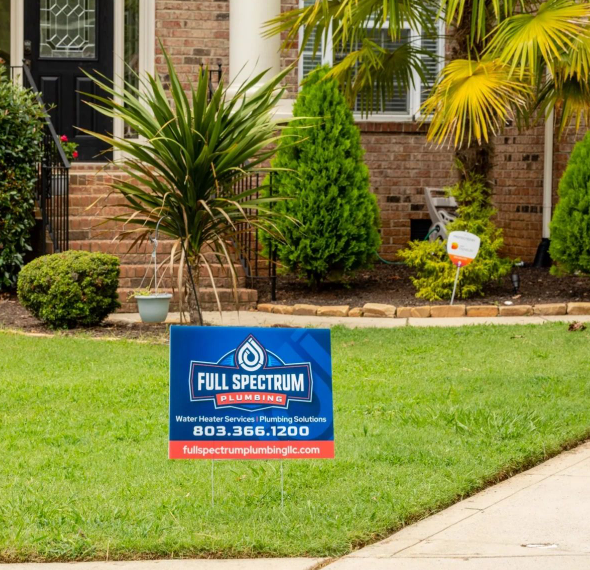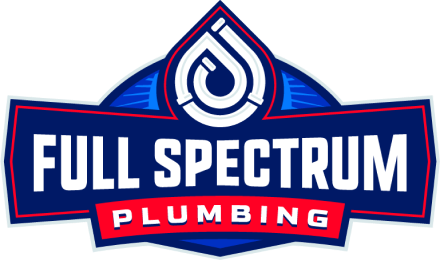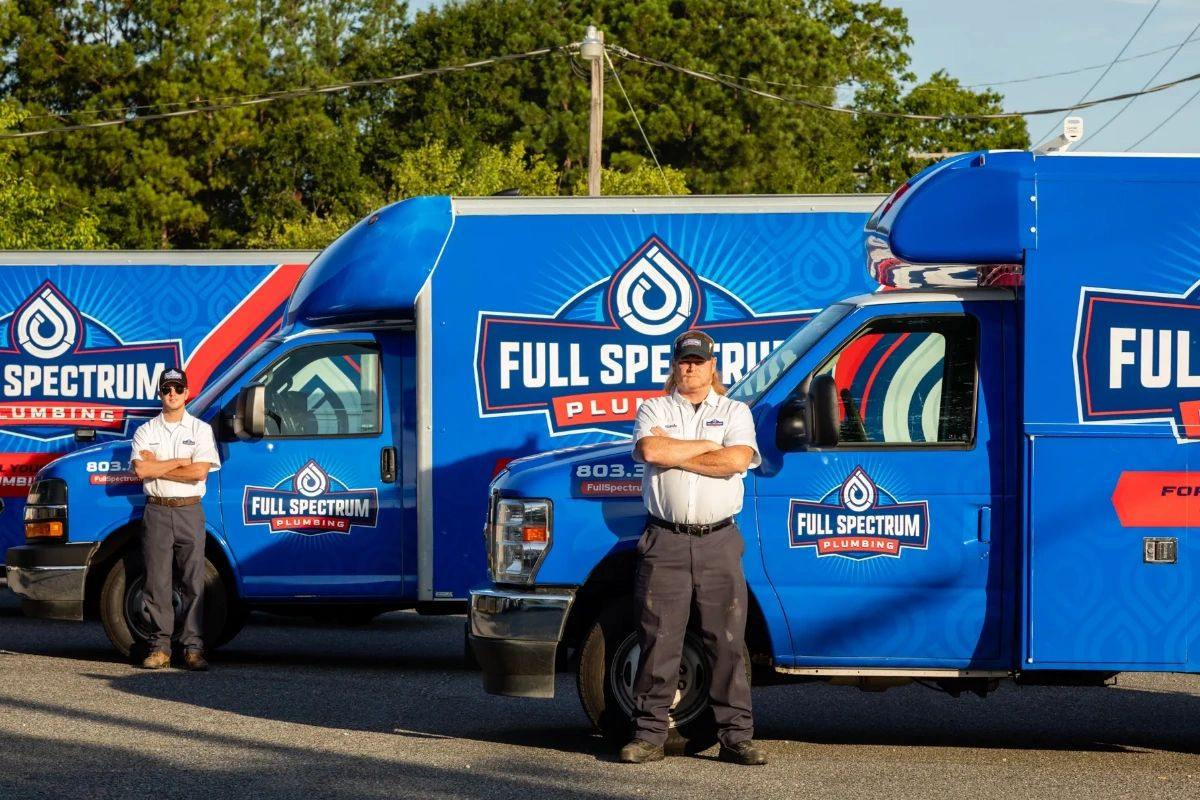The Benefits and Drawbacks of Using Polyvinyl Chloride (PVC) for Indoor Plumbing
Rock Hill, United States - May 31, 2023 / Full Spectrum Plumbing Services /

PVC is the most common material used for indoor plumbing, as it is both affordable and reliable. It can provide a range of benefits when compared to other materials such as metal piping. These benefits include:
- Durability – PVC is an extremely durable material that can withstand pressure and extreme temperatures without corroding or rusting. This means that it will last longer than metal piping and require fewer repairs over time.
- Versatility – PVC pipes are available in different sizes, shapes, and lengths, making them ideal for any indoor plumbing project. They are also flexible enough to be bent around corners or contours without needing special fittings.
- Low Maintenance – PVC requires little maintenance due to its resistance to corrosion and rust. This means that it is easy to install and does not need frequent replacement or repairs.
- Cost Effective – PVC pipes are more affordable than other materials, such as copper piping, making them the preferred choice for budget-conscious homeowners.
However, PVC also has some drawbacks when compared to metal piping:
- Rigidity – PVC is a rigid material that can make installation more difficult in tight spaces or around corners. It may require special fittings and connections to ensure a secure fit.
- Limited Lifespan – While PVC is durable, it has a limited lifespan of around 50 years before it will start to degrade due to wear and tear or exposure to certain chemicals.
- Susceptibility to Damage – PVC is vulnerable to damage from certain chemicals, such as bleach or ammonia, which can cause it to become brittle and break down over time.
- Poor Heat Resistance – PVC does not handle high temperatures well and may degrade quickly if exposed to hot water for long periods. This makes it unsuitable for use in areas that have frequent hot water usage, such as kitchens or bathrooms.
Is PVC the Best Material for Indoor Plumbing? Comparison with Other Materials: Copper, PEX, Galvanized Steel
There are several common materials used for indoor plumbing. Copper, PEX, galvanized steel, and polyvinyl chloride (PVC) each have advantages and disadvantages that make them suitable for different applications.
Copper is the most widely used material for residential plumbing due to its durability and longevity. It can last up to 50 years or more depending on the quality of water running through it. However, copper is difficult to install due to its weight and requires specialized tools such as soldering torches. Additionally, copper pipes may corrode over time due to contact with other metals in the system or acidic water conditions.
PEX tubing is a flexible plastic pipe that is becoming increasingly popular among plumbers for both repairs and new installations. It is lightweight and easy to install, making it a great choice for DIYers. Additionally, PEX can handle hot water temperatures better than copper and has fewer joints that could potentially leak. The downside of PEX is that it cannot be used outdoors or in areas with high UV exposure because its plastic material will degrade over time.
Galvanized steel pipes were commonly used before the introduction of plastic pipes in the 1950s but are quickly becoming obsolete due to their tendency to corrode from contact with other metals and acids found in water supplies. Galvanized steel also tends to clog more easily than other materials, meaning frequent maintenance may be required.
Lastly, PVC piping is one of the most popular options for indoor plumbing due to its affordability and ease of installation. PVC is also resistant to corrosion, as well as acids and ultraviolet light, meaning it can be used outdoors in addition to indoors. Additionally, it’s durable enough to withstand high water pressure, making it an ideal choice for homes with larger water needs. The main downside of PVC is that it cannot handle hot water temperatures as well as some other materials like copper or PEX tubing.
Overall, there is no one-size-fits-all solution when selecting a material for indoor plumbing. Each material has its own set of advantages and disadvantages that should be taken into consideration before making a decision. Ultimately, the best option will depend on the specific needs of the project and the budget available.
The Safety of PVC Pipes in Drinking Water Systems
Pipes made of polyvinyl chloride, or PVC, have been utilized for many years in the distribution of drinking water. In recent years, certain questions concerning the safety of using PVC pipes in these systems have been raised by various parties. The primary cause for concern is the potential for specific chemicals from the plastic to leak into the water, which would put the health of individuals who drank the water at risk.
As a direct response to these worries, investigations into the safety of using PVC pipes in drinking water distribution systems have been carried out. According to studies, there are no known threats to human health posed by PVC piping provided that it is installed and maintained correctly. Because of its smooth surface, the likelihood of germs or other pollutants being embedded in it is reduced. Even though chlorine-based disinfection can be utilized with PVC piping, certain parameters governing its application must be adhered to to prevent the water supply from being tainted.
Maintaining PVC Plumbing: Tips and Best Practices
Taking care of your PVC plumbing is an important part of home maintenance. Here are some useful tips and best practices for keeping your PVC plumbing in top shape:
- Clean the Joints: Regularly inspect and clean the joints between pipes and fittings to prevent clogs or leaks. Use a soft brush to loosen debris, then flush with water to clear any residue that may have been collected in the space.
- Check Connections: Make sure all connections between pipes and fittings are properly tightened. Loose connections can cause significant water damage over time, so it's important to check them periodically and address any issues right away.
- Utilize Primers & Glues: When installing new PVC plumbing, be sure to use primers and glues designed for the specific type of pipe. This will ensure a tight seal that won't leak or come undone over time.
- Inspect Regularly: It's important to inspect your PVC plumbing regularly and address any visible issues right away. Look for signs of corrosion or damage, such as cracks in the pipes or fittings, discoloration, and strange odors.
- Use Water Softener: To prevent buildup on your PVC pipes, consider installing a water softener system in your home. These systems remove hard minerals from the water supply before it enters the home, which can help reduce buildup and extend the life of your plumbing system.
Commit With Our Plumbing Services
Full Spectrum Plumbing Services acknowledges that plumbing maintenance is essential. We have experienced technicians who are trained to undertake all kinds of plumbing repairs, replacements, and installations. Contact us today for all your plumbing needs! We look forward to serving you with our precision and expertise.

Contact Information:
Full Spectrum Plumbing Services
1146 E White St Suite A
Rock Hill, SC 29730
United States
Thomas Munn
(803) 902-3732
https://fullspectrumplumbingllc.com/
Original Source: https://fullspectrumplumbingllc.com/media-room/#/media-room



